MobiWireS VFD320 3G Smartphone User Manual Sanjeev
MobiWire SAS 3G Smartphone Sanjeev
Contents
- 1. user manual
- 2. User manual
User manual
1
User
User Manual
Manual
Mobile
Mobile Phone
Phone
Model
Model:VFD
VFD 320
320
Hereby,
Hereby, MOBILE
MOBILE LIMITED
LIMITED
declares
declares that
that this
this Mobile
Mobile Phone
Phone is
is in
in
compliance
compliance with
with the
the essential
essential
requirements
requirements and
and other
other relevant
relevant
provisions
provisions of
of Directive
Directive 2014/53/EU.
2014/53/EU.
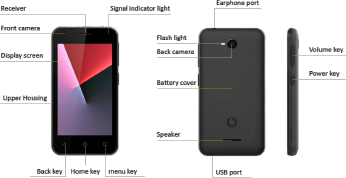
2
Know your phone
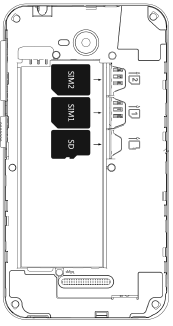
3
SIM/SD card installation
1.
1. Power
Power off
off mobile.
mobile.
2.
2. Refer
Refer to
to the
the following
following picture
picture for
for SIM
SIM /
/SD
SD card
card
installation.
installation.
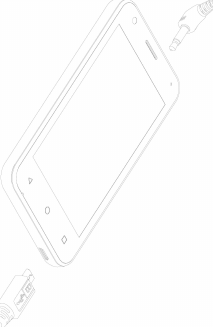
4
Charging the phone
You
You can
can charge
charge your
your device
device using
using a
acharger
charger or
or by
by connecting
connecting
it
it to
to the
the computer
computer using
using a
aUSB
USB cable
cable (comes
(comes with
with the
the
phone).
phone).
1.
1. Please
Please remind
remind the
the front
front and
and back
back of
of the
the plug.
plug.
2.
2. Use
Use only
only original
original charger
charger and
and cables.
cables. Other
Other chargers
chargers or
or
cables
cables may
may damage
damage the
the device
device or
or your
your device.
device. This
This will
will
invalidate
invalidate your
your phone
phone warranty.
warranty.
5
Operating Frequency Band (RF):
GSM850:824-849 MHz(TX), 869-894 MHz(RX),
EGSM900:880.0–915.0MHz(TX), 925.0–960.0MHz(RX)
DCS 1800: 1710.0–1785.0MHz (TX), 1805.0–1880.0 MHz (RX)
PCS 1900: 1850.0–1910.0MHz (TX), 1930.0–1990.0MHz (RX)
WCDMA BAND1: 1920-1980MHz (TX), 2110-2170MHz (RX)
WCDMA BAND8: 880-915MHz (TX), 925-960MHz (RX)
Bluetooth: 2402-2480MHz (TX/RX)
WIFI: 2412-2462MHz (TX/RX)
GPS:1575.42MHz
FM:87.5MHz-108MHz(RX)
Modulation mode:
GMSK (GSM850/GSM900/DCS/PCS)
WCDMA Uplink:BPSK/QPSK/16QAM;
WCDMA Downlink:BPSK/QPSK /16QAM/64QAM
GFSK/π/4-DQPSK/ 8-DPSK (Bluetooth)
BPSK/QPSK/16QAM/64QAM/DSSS/OFDM/ CCK (WIFI b/g/n)
BPSK/QPSK (GPS)
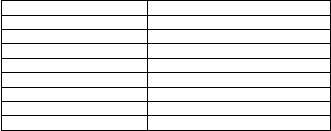
6
Max Output Power:
Item
Max Output Power(dBm)
GSM850/GSM900
33.5
PCS1800/DCS1900
30.5
WCDMA900/WCDMA2100
23
BT
5.5
802.11b
15.5
802.11g
13.5
802.11n 20M
12.5
802.11n 40M
11
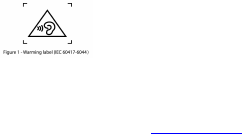
7
CAUTION:
1. Use careful with the earphone maybe excessive sound pressure from
earphones and headphones can cause hearing loss.
2. Risk of explosion if battery is replaced by an incorrect type, dispose of
used batteries according to the instructions.
3. The product shall only be connected to a USB interface of version
USB2.0.
4. Adapter shall be installed near the equipment and shall be easily
accessible.
5. EUT Temperature: -20℃~+60℃.
6. Charger1:A31A-050100U-EU1
Charger2:A31A-050100U-EU1
Charger3:WUK550mA5V00
Charger4:TUUK050055
Charger5:TUAU050055
7. The device complies with RF specifications when the device used at
5mm from your body.
8. To prevent possible hearing damage, do not listen at high volume
levels for long periods.
9. Earphone and USB cable are shielded.
Hereby, vodafone, declares that this device (VFD 321/ VFD 320)is in
compliance with the essential requirements and other relevant provisions
of Directive 2014 / 53 / EU. The full text of the EU declaration of conformity
is available at the following internet address: www.vodafone.com
8
FCC Regulations
(15C)This device complies with part 15 of the FCC
Rules. Operation is subject to the following two
conditions: (1) This device may not cause
harmful interference, and (2) this device must
accept any interference received, including
interference that may cause undesired
operation.
Changes or modifications not expressly approved by the
manufacturer could void the user’s authority to
operate the equipment.
The antenna(s) used for this transmitter must not be
co-located or operating in conjunction with any
other antenna or transmitter.
(15B)This equipment has been tested and found to
comply with the limits for a Class B digital
device, pursuant to part 15 of the FCC Rules.
These limits are designed to provide reasonable
protection against harmful interference in a
residential installation. This equipment
generates, uses and can radiate radio
frequency energy and, if not installed and used
in accordance with the instructions, may cause
harmful interference to radio communications.
However, there is no guarantee that
interference will not occur in a particular
installation. If this equipment does cause
harmful interference to radio or television
reception, which can be determined by turning
9
the equipment off and on, the user is
encouraged to try to correct the interference by
one or more of the following measures:
Reorient or relocate the receiving antenna.
Increase the separation between the equipment and receiver.
Connect the equipment into an outlet on a circuit different
from that to which the receiver is connected.
Consult the dealer or an experienced radio/TV technician for
help.
Radio Frequency (RF) Energy
This phone is designed and manufactured not to exceed
the emission limits for exposure to radio
frequency (RF) energy set by the Federal
Communications Commission of the United
States.
During SAR testing, this device was set to transmit at its
highest certified power level in all tested
frequency bands, and placed in positions that
simulate RF exposure in usage against the
head with no separation, and near the body
with the separation of 10 mm. Although the
SAR is determined at the highest certified
power level, the actual SAR level of the device
while operating can be well below the
maximum value. This is because the phone is

10
designed to operate at multiple power levels so
as to use only the power required to reach the
network. In general, the closer you are to a
wireless base station antenna, the lower the
power output.
The exposure standard for wireless devices employing
a unit of measurement is known as the Specific
Absorption Rate, or SAR. The SAR limit set by
the FCC is 1.6 W/kg.
This device is complied with SAR for general population
/uncontrolled exposure limits in ANSI/IEEE
C95.1-1992 and had been tested in
accordance with the measurement methods
and procedures specified in IEEE1528.
The FCC has granted an Equipment Authorization for
this model phone with all reported SAR levels
evaluated as in compliance with the FCC RF
exposure guidelines. SAR information on this
model phone is on file with the FCC and can
be found under the Display Grant section of
www.fcc.gov/oet/ea/fccid after searching on
FCC ID: QPN-VFD320
For this device, the highest reported SAR value for
usage against the head is1.133W/kg, and for
usage near the body is 1.133W/kg.
While there may be differences between the SAR levels
of various phones and at various positions,
they all meet the government requirements.
SAR compliance for body-worn operation is based on a
11
separation distance of 10 mm between the unit
and the human body. Carry this device at least
10 mm away from your body to ensure RF
exposure level compliant or lower to the
reported level. To support body-worn operation,
choose the belt clips or holsters, which do not
contain metallic components, to maintain a
separation of 10 mm between this device and
your body.
RF exposure compliance with any body-worn accessory,
which contains metal, was not tested and
certified, and using such body-worn accessory
should be avoided.